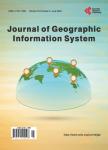Geospatial Analysis of Flood Risk and Vulnerability Assessment along River Benue Basin of Kogi State
Geospatial Analysis of Flood Risk and Vulnerability Assessment along River Benue Basin of Kogi State作者机构:Department of Urban and Regional Planning Federal University of Technology Minna Niger State Nigeria Centre for Disaster Risk Management and Development Studies CDRM & DS Federal University of Technology Minna Niger State Nigeria
出 版 物:《Journal of Geographic Information System》 (地理信息系统(英文))
年 卷 期:2020年第12卷第1期
页 面:1-14页
学科分类:08[工学] 081501[工学-水文学及水资源] 0815[工学-水利工程]
主 题:Geospatial Vulnerability Flood Disaster
摘 要:River flooding has become a widely distributed and devastating natural disaster that has caused significant damages both economically and socially in Nigeria. Although, the Nigeria Meteorological Agency (NiMet) are always on time to provide flood warnings prior to flood disasters, spatial information pertaining to the areal extent vulnerable to the hazard are not usually made available. This study focuses on the application of geospatial techniques and quantitative research method for the assessment and analysis of flood risk and vulnerability assessment along the River Benue Basin of Kogi State. Digital Elevation Model (DEM) and Landsat Thematic Mapper (TM) images for 2010, 2014 and 2018 were used. These images were processed, digitized, interpolated, classified, overlaid and buffered using the ArcMap 10.3.1 GIS software to generate classified land use/cover maps, topographic map and flood physical vulnerability maps. Household questionnaires which contained structured questions were distributed and obtained to analyse the social-economic vulnerability of the study area using descriptive analysis. The study revealed that areas within 6-kilometre buffer from the River Benue are most vulnerable to flood hazard with the vulnerability decreasing towards the southern part. The two urban areas in the study area (Abejukolo and Oguma) are vulnerable to flood threat. Abejukolo is vulnerable due to high water footprint in the town and its surroundings. The factors that increase flood vulnerability of the inhabitants are low elevation, high illiteracy rate, high numbers of dependent population, poverty, low quality housing, poor land use and planning, inadequacy or absence of risk communication tools. The study recommends the development of guidelines for land use, continuous vulnerability mapping of the study area especially in the flood risk probability months (April to October), construction of dams to contain release water from the upstream, collaboration of NEMA with the



